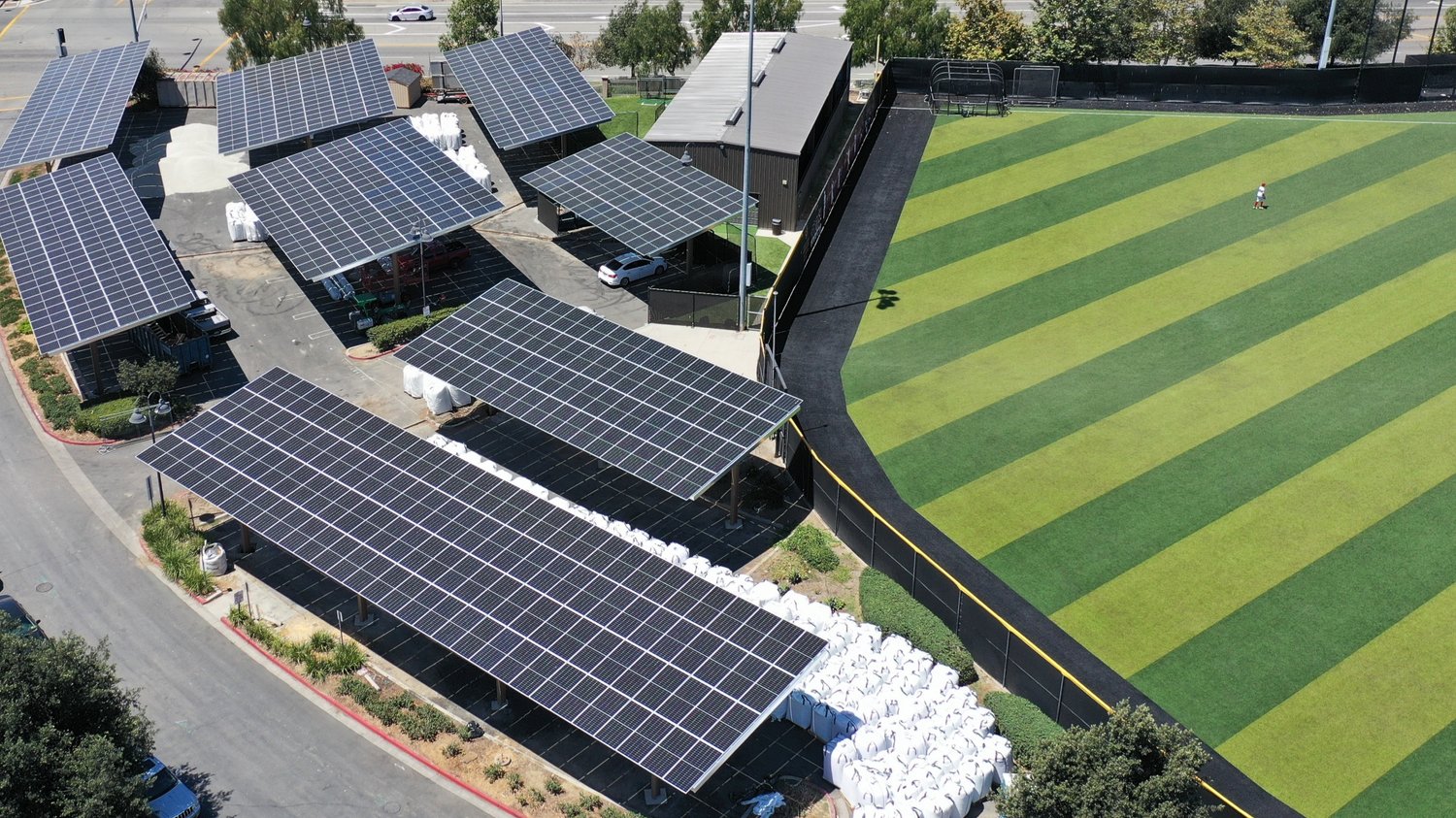ImpactAlpha, Nov. 28 – The dueling narratives of climate change will face off at COP28, the two-week global climate gathering that begins Thursday in Dubai.
Global tipping points are nigh. The 1.5 degree Celsius scenario is dead. And energy security and economic headwinds are slowing adoption of renewables.
But the case for optimism is more persuasive.
The breakneck pace of global renewable energy rollouts suggests that the low-carbon energy transition is not only feasible, but inevitable. Renewables are expected to become the world’s largest source of electricity in 2025, overtaking coal, according to the International Energy Agency. The IEA revised its five-year forecast for renewables by 30% just since last year, its largest-ever upward revision.
Renewables have become the world’s cheapest energy sources. Governments around the world are racing to build their own domestic capacity. And technological innovations promise to drive costs further down the curve.
China, the world’s largest emitter, has added a staggering amount of solar and wind power, and has agreed to include methane and other greenhouse gases in its next national plan. One Chinese company, Jinko Solar, shipped more than 22 gigawatts of solar panels – the equivalent of 44 coal-fired power plants – in the third quarter alone.
“The difference now from even last year, is the astonishing scale-up of clean energy technologies,” says Mark Campanale of CarbonTracker.
At the 28th “Conference of the Parties,” leaders from 190 nations will attempt to deliver on past promises and accelerate climate action in the face of a rapidly warming planet. Most experts say we have the needed technology and the capital; what’s missing is political will.
Progress is expected on goals to triple renewable energy capacity by 2030, reduce methane emissions, finalize rules for high integrity carbon credits and stand up a “loss and damages” fund to help developing nations recover from natural disasters and historical climate inequities.
Such forward movement is sorely needed. A global assessment, or “stocktake,” of progress since the 2015 Paris climate accord found that countries are woefully behind on their commitments aimed at limiting global temperature rise, even as they prepare more ambitious, updated targets. China and India’s continued rapid expansion of coal-based power plants puts climate progress at risk. This year is already the hottest on record, and the chances of keeping warming to 1.5 degrees Celsius are increasingly slim.
And climate advocates fear that this year’s gathering, in the petro state of the United Arab Emirates and hosted by the chief of its national oil company, could become a massive greenwashing exercise for oil and gas interests looking to prolong their planet-wrecking profits. Reports that the UAE’s COP28 team has used its presidency to strike oil and gas deals have confirmed some of those suspicions.
“This is a high stakes COP,” said John Morton of climate advisory firm Pollination, pointing to public policies and financial incentives around the world that set the stage for exponential progress.
“The question now is: How quickly can we deploy, innovate and, particularly for the UAE presidency, how quickly are we going to commit ourselves to moving away from fossils?” Morton told ImpactAlpha.
Carbon markets
Trillions of dollars will be needed to underwrite the energy transition and help people adapt to a changing climate and increasing floods, droughts and wildfires. At COP28, governments will be on the hook to respond to the report card of the global stocktake.
The question hanging over the whole confab: Where will the funding come from?
New climate funds are expected to be announced, including one from the UAE itself that will look to attract other sovereign capital. That would be on the back of the $4.5 billion the UAE announced at Africa Climate Week in September to unlock the continent’s clean energy potential.
With many Western governments constrained by domestic concerns – political opposition, inflation, a war in Ukraine and now in Palestine – negotiators will need to get creative. On the table: blended finance, carbon markets, development bank reform, and solidarity taxes.
“We desperately have to float the loss and damage fund. We have to float a methane fund. We need adaptation and resilience financing,” says Rachel Kyte, dean emerita at Fletcher School at Tufts University and chair of the Voluntary Carbon Markets Integrity Initiative. The initiative is developing integrity guidelines for corporations making claims about carbon credits.
“We can’t just stand still because the US Congress can’t be approached by the Biden administration, or because Rishi Sunak is having a bit of wobble about what the obligations of the UK are.”
One potential breakthrough is a global framework for trading high-integrity carbon credits between countries or countries and corporations, under the supervision of the United Nations. Expect to hear more about “Article 6” (and specifically “6.4”) of the Paris climate accord.
Carbon markets have the potential to encourage developing nations and Indigenous communities to store carbon in forests and wetlands and to replace fossil fuels with clean energy by letting them sell registered credits to countries or corporations looking to achieve net zero goals. By some estimates, such trading could cut the cost of implementing countries’ Nationally Determined Contributions, or NDCs, as the emissions targets are known, by more than half.
Issues with early, low-quality credits have plagued the voluntary carbon markets, and led to a general distrust of such offsets, both in the unregulated “voluntary” market or regulated compliance markets. An agreement at COP28 could go a long way to restoring trust in carbon markets and unlocking billions of dollars for carbon removal, starting as early as late next year.
At last year’s COP, US climate envoy John Kerry floated the idea of an “energy transition accelerator” that could pay countries for decommissioning coal plants on an accelerated timeline. The model relies on monetizing the early retirements by creating offsets for verified projects.
Another idea gaining traction in some quarters is a “solidarity tax” levied on polluters to pay for climate action or loss and damages. That could take the form of a tax on the windfall profits of oil and gas companies, financial transactions, or business-class air travel.
“There’s a lot of money sloshing around doing the wrong thing,” says Kyte. Exhibit A: The $7 trillion in annual global fossil fuel subsidies, the equivalent of $13 million a minute.
Development finance
There is by now consensus that development finance institutions need to modernize to better address a changing world. That includes more risk-taking, use of guarantees and other methods to crowd in private capital, and less reliance on debt for developing countries already struggling under debt loads. To leverage private sector capital, IDB Invest has adopted an “originate to share” model, versus the traditional “originate to own.”
“I think you’re going to see both in the [multilateral development bank] reform discussion and in a number of vehicles and funds and projects that will be announced during the course of the COP, lots of examples of how blending is occurring around the world,” said Pollination’s Morton.
This year, the Asian Development Bank, or ADB, created a novel program that encourages donor nations to guarantee parts of its loan portfolio, freeing up capital for new climate lending. With $3 billion in guarantees, the Innovative Finance Facility for Climate in Asia and the Pacific, or IF-CAP, could generate $15 billion in capital for climate projects in Asia and the Pacific.
Methane summit
Much of the focus at COP gatherings has been CO2 emissions. But action to curb methane emissions, an even more powerful heat-trapping greenhouse gas, are gaining traction.
The global methane reduction pledge launched at COP26 in Glasgow has been signed by 150 nations. The voluntary pledge, which seeks to cut methane emissions by 30% by 2030, should be mandatory, argues Kyte. China and the US have agreed that the next round of NDCs, or national emissions reduction targets, should include all greenhouse gases. In Dubai, the US, China and the UAE will co-host a methane summit.
Given the oil and gas presence at COP28, there is an opportunity to address low-hanging fruit like eliminating flaring and other sources of methane. COP president Sultan Al Jaber has suggested that several oil and gas firms could pledge to zero out methane emissions and eliminate routine flaring by the end of the decade. The methane reduction-focused Astra Project will lay out such solutions at a series of “methane intensives” sessions at COP28.
“We’re probably not going to have a material conversation about ending the exploration and extraction of fossil fuels,” noted Stephan Nicoleau of FullCycle, who is leading the sessions. “And so if we’re not going to do that, then the focus really does have to be on methane mitigation.”
Nicoleau is referring to the ongoing debate over whether to “phase down,” or “phase out”,” fossil fuels. Saudi Arabia scuttled the “phase out” language last year; you can guess where the UAE stands. But, if we can actually triple renewable energy capacity by the end of the decade, as COP28 planners hope to agree, then market forces may just take over.
A report from the International Energy Agency found that oil and gas company valuations drop 25% from their current $6 trillion today if all national energy and climate goals are reached, and by as much as 60% if the world gets on track to limit global warming to 1.5 °C. “The oil and gas industry is facing a moment of truth at COP28 in Dubai,” said the IEA’s Fatih Birol. Clean energy progress will continue with or without them, he added.
“We just need a few more years of this to show real demand destruction for fossil fuels,” says Planet Tracker’s Campanale of the rapid take-up of clean energy. “That’s what we’re thinking about – what are the tipping points where fossil fuel stocks will get de-rated by the market.”











